St Helier

I found an old image is it made me think of st helier but at another decade and I find it interesting because you can see how over time the style changes. People’s clothes but also the architecture of the building behind.
St Helier

I found an old image is it made me think of st helier but at another decade and I find it interesting because you can see how over time the style changes. People’s clothes but also the architecture of the building behind.
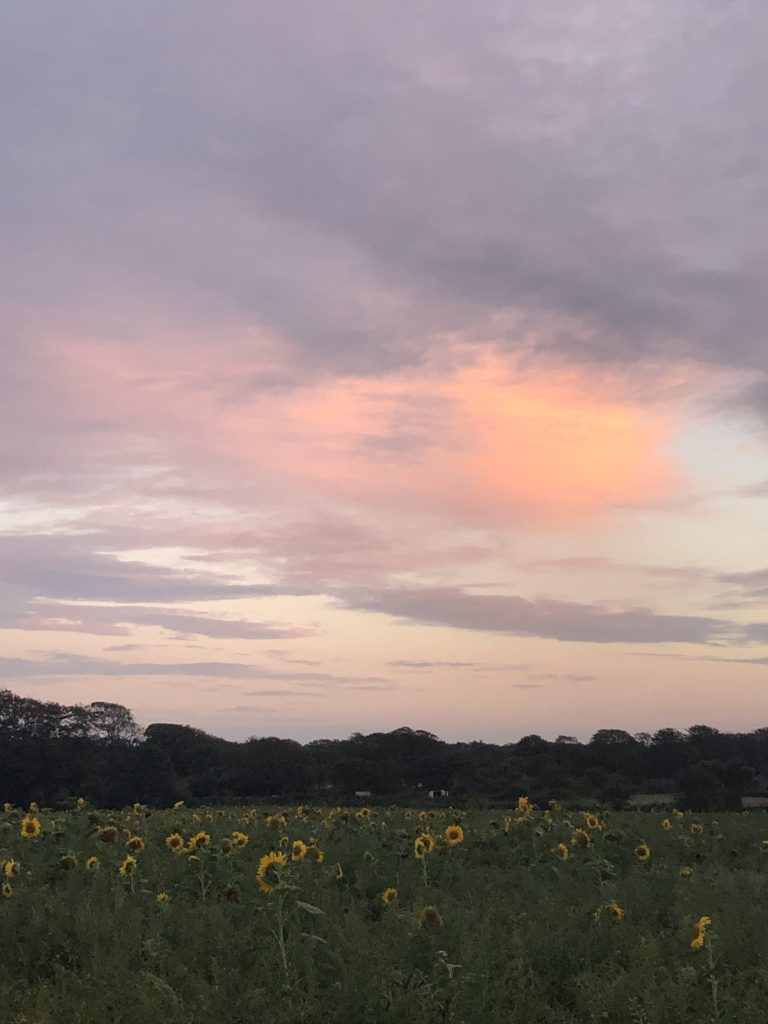
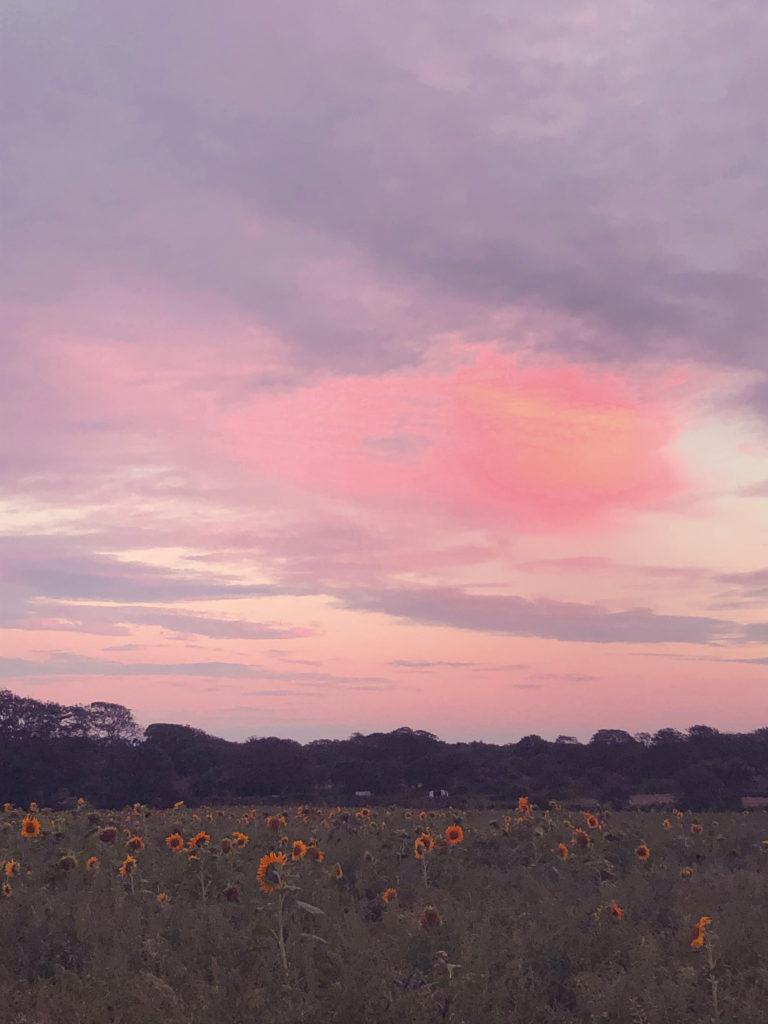

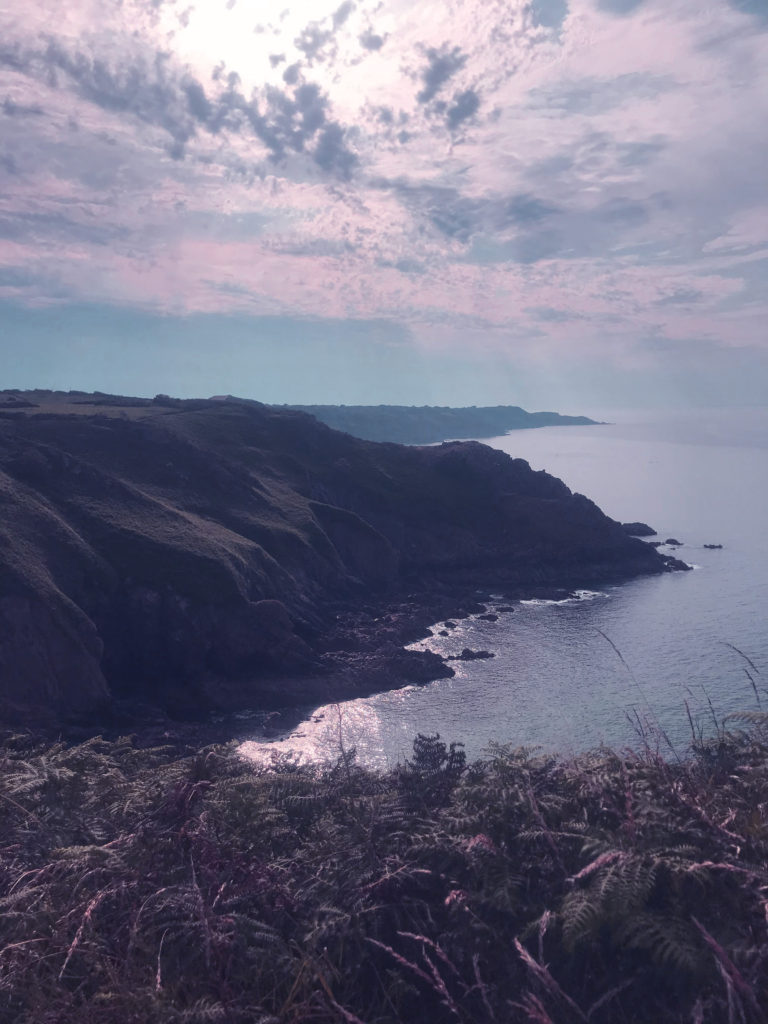

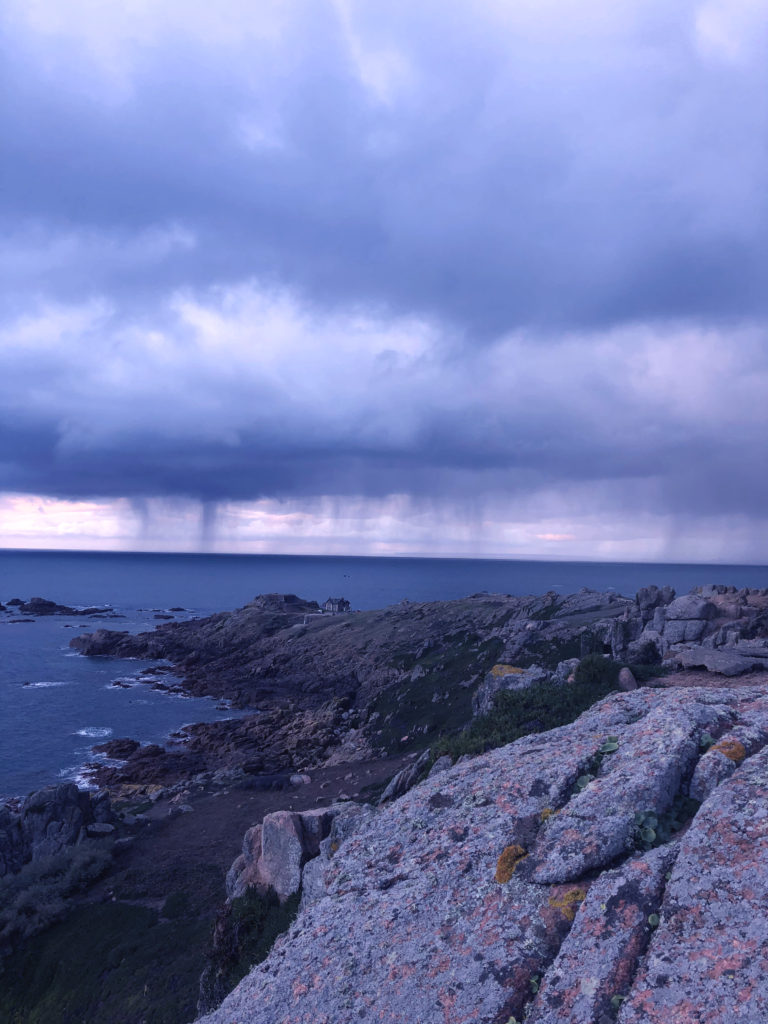
I decided to further experiment with photoshop in this photoshoot so I decided to edit the images in a similar way to the classic romanticism in art. To do this I used colour filters and adjusted the hue and colour saturation to exaggerate the colours in the photo. I think the black and white edits add a more vintage and classic, intense look to the photographs. On the other hand I think that the coloured edits relate closer to the theme of romanticism in art.

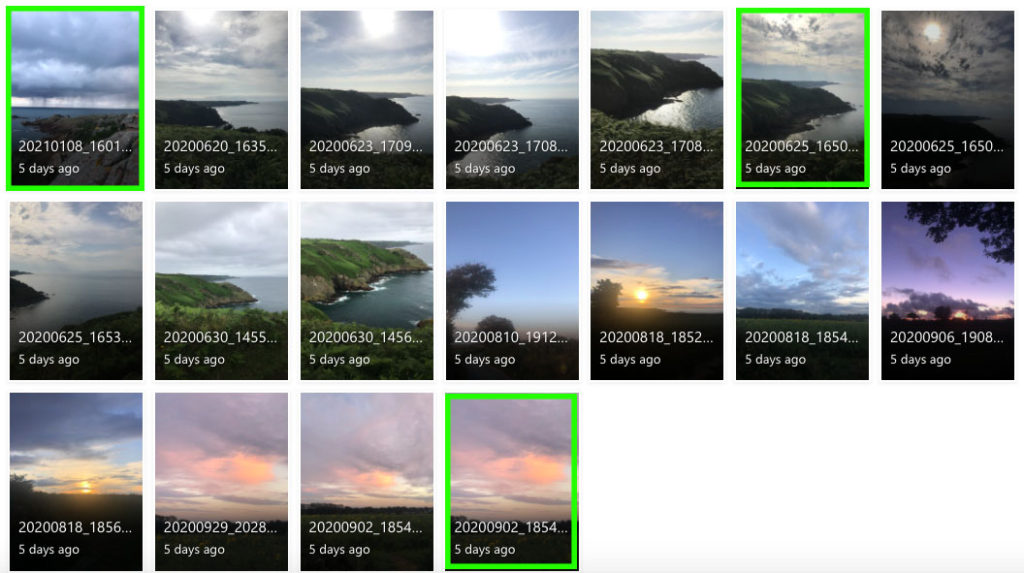
I believe the images highlighted in green are my most successful images in terms of Ansel Adams style of photography. I feel like these images have a better sense of romanticism because of the colours, tones or the interesting shape of the clouds. Putting these images in black and white through photoshop would further develop the same style that Adams is widely known for.
In general, these photos would be better quality if they were taken with a camera rather than a phone, however I did not have access to a camera for this photoshoot.

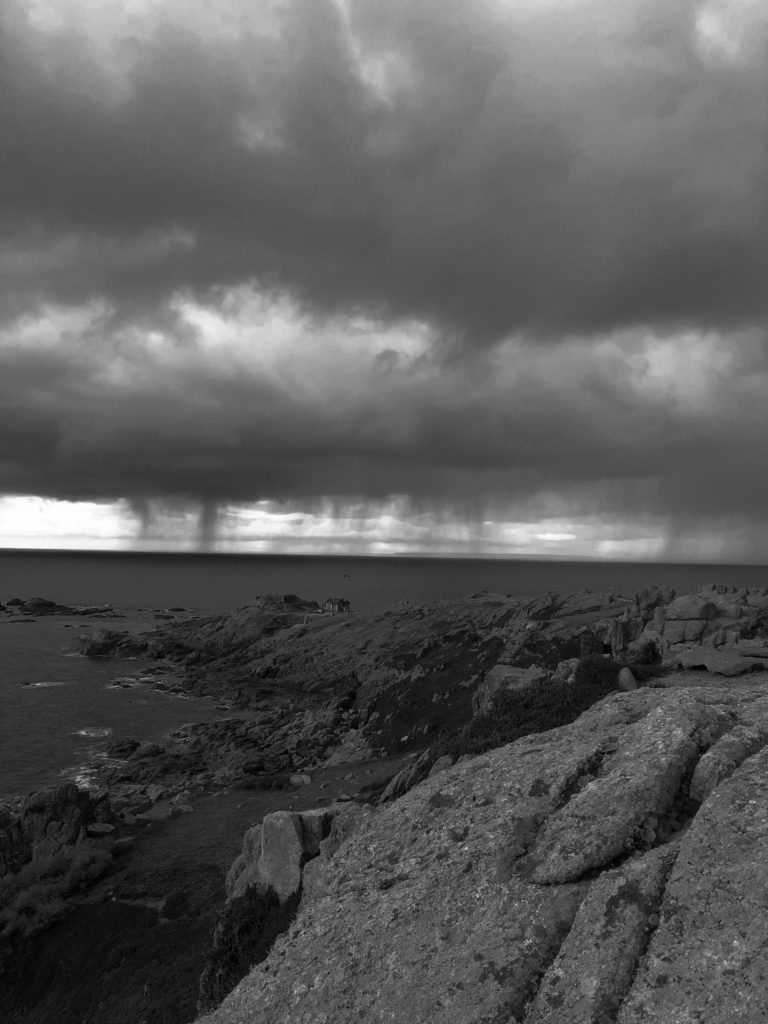
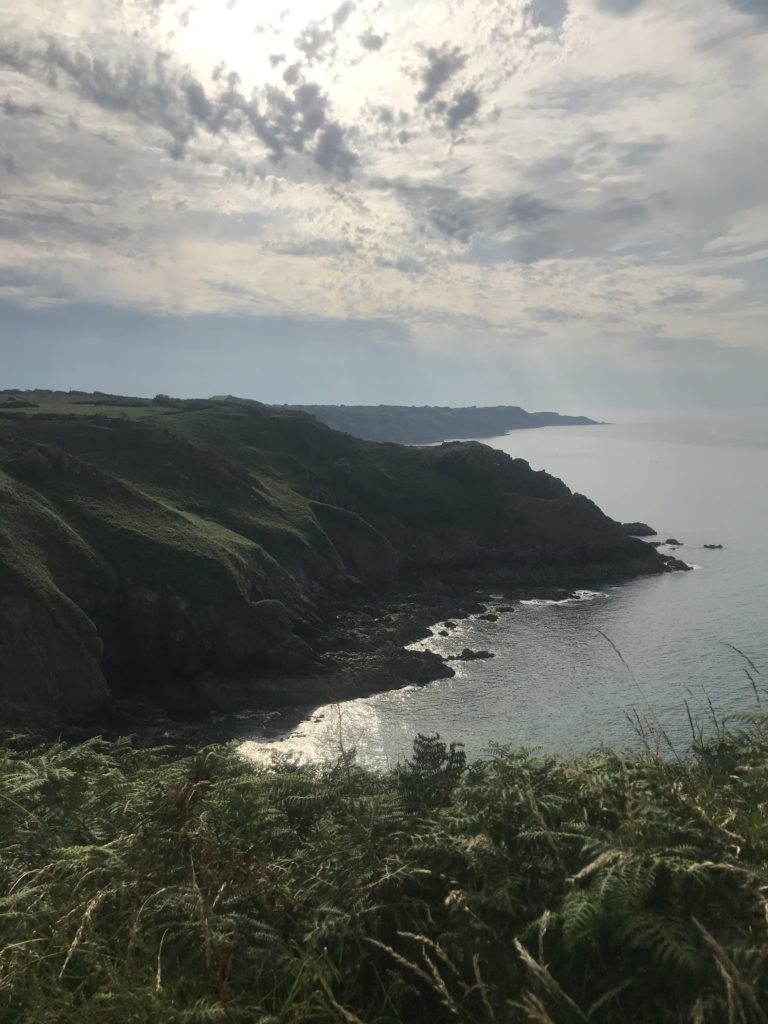
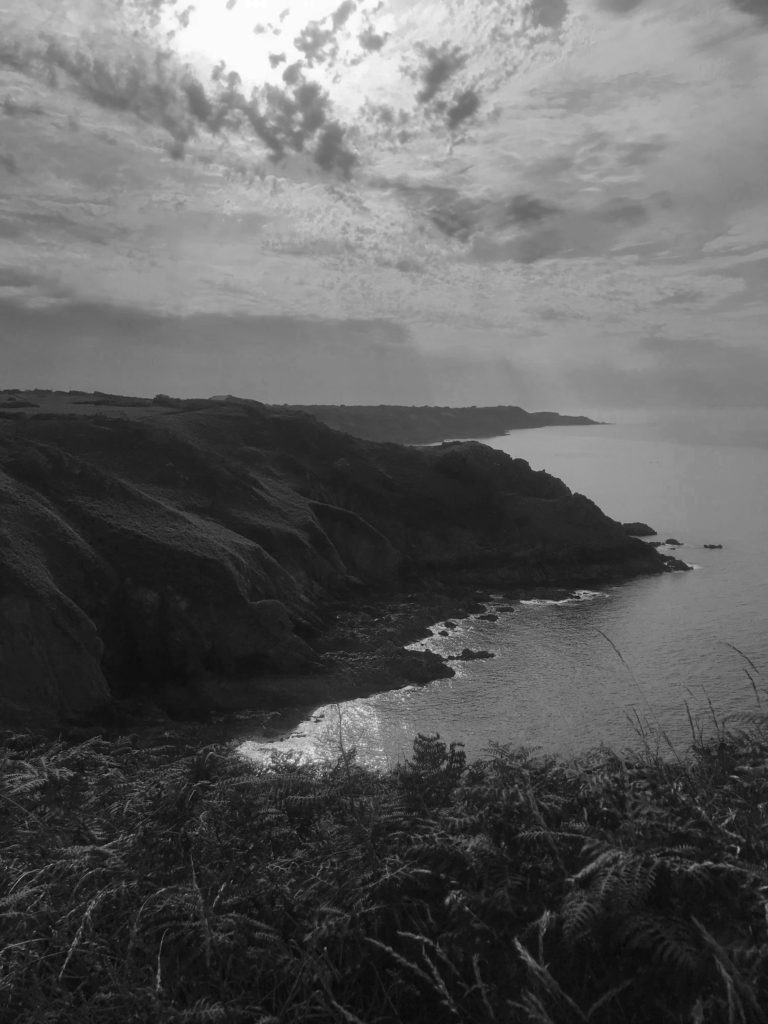

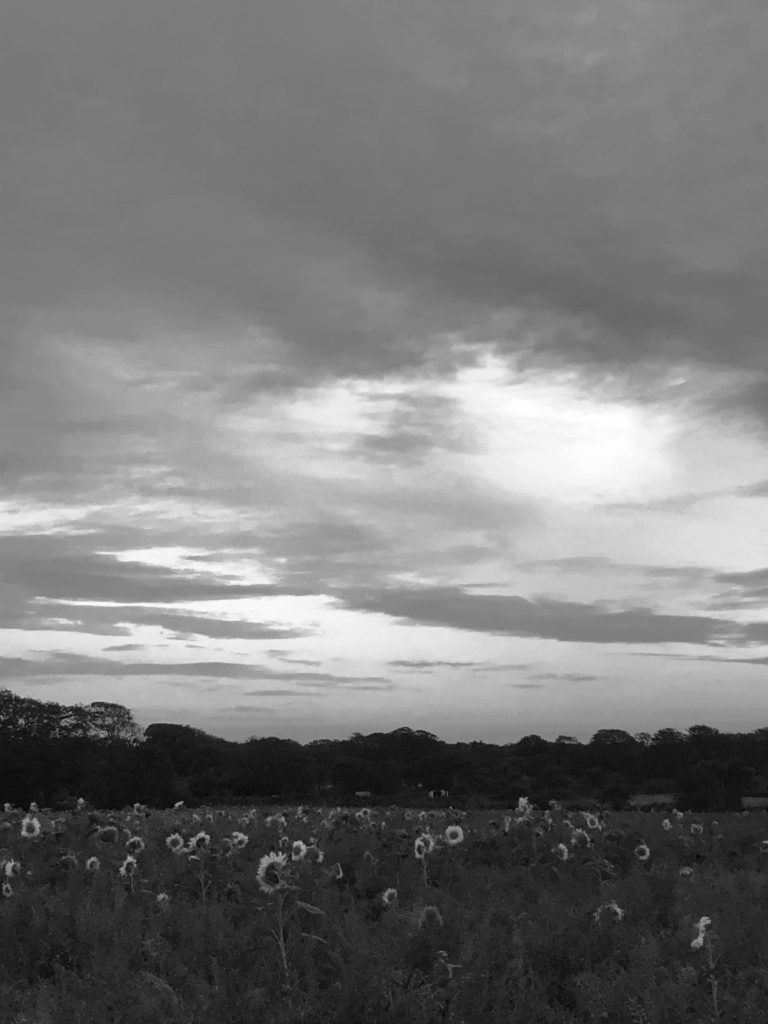
To edit these images, I used photoshop to give the photographs the same monochromatic theme that is iconically known within Ansel Adams work. I also adjusted the brightness and contrast curves to create more intense shadows and highlights, similar to the ones in the work of Adams.
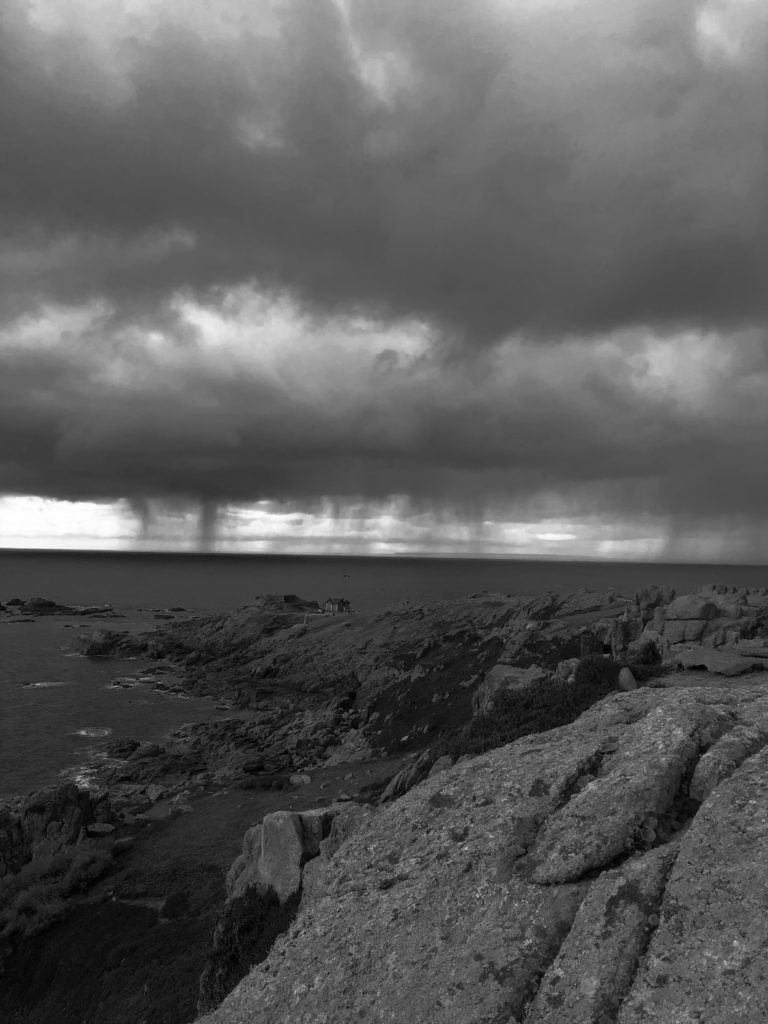

I believe my work and the work of Ansel Adams have both similarities and differences. In terms of similarities, the use of the black and white filter allows for the tones in both images to be accentuated and there is a sense of the sublime in both images. On the other hand the images are different because Adams photograph is taken on a much larger scale, he also practiced the use of using the tonal values of an image to it’s full capacity, whereas I had to alter the contrast and brightness levels in order to achieve the level of contrast that Adams is known for.
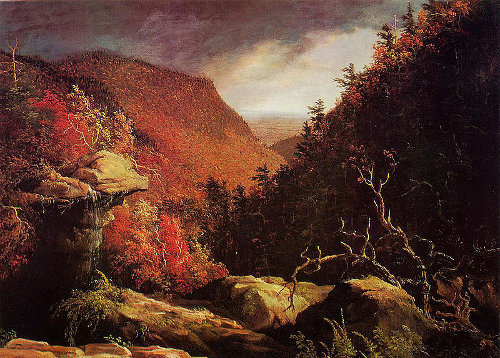
Romanticism in art became a poplar movement at the start of the 1800’s. Romantic art often saw links between the artists view of the ‘ sublime’, or expression of personal feeling and interest in the natural world. Romanticism emerged as a hopeful source on nature after the French Revolution in 1789, and shows the artist’s often exaggerated view on nature in order to create beauty out of the nature that was destroyed in war. Romanticism was shaped largely by artists trained in Jacques Louis David’s studio, including Baron Antoine Jean Gros, Anne Louis Girodet-Trioson, and Jean Auguste Dominique Ingres.




Romanticism has converted into a form of photography with the same aim as romantic art, to create an idealistic view of the world. Romantic photography depicts an exaggerated view on nature by which the features are dramatically and positively represented. This is done by editing a landscape image to create extreme contrasts between colour, tone and lighting. Ansel Adams is a perfect representation of romantic photography as his images display an almost magical view on the world’s natural state.

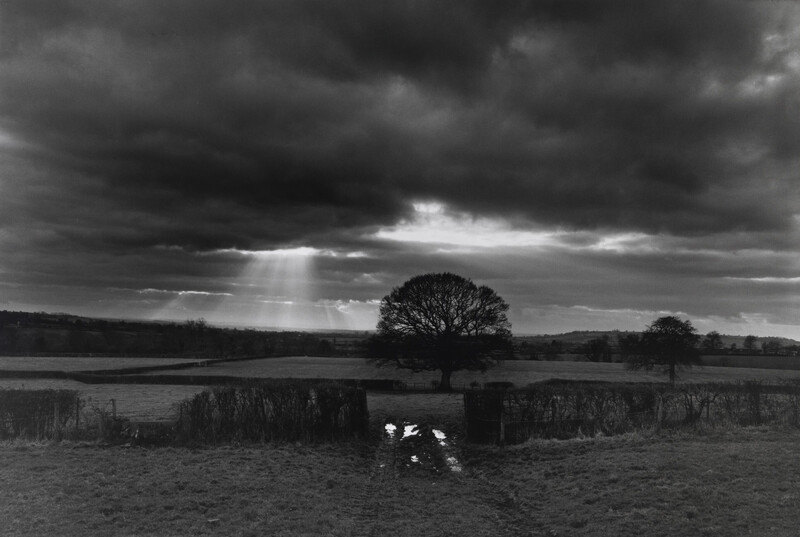


Ansel Adams, born in 1902 and died in 1984, was an American photographer and environmentalist who was passionate about capturing nature in it most beautiful and powerful form. Adams was given his first camera at age 12 on a family holiday to Yosemite National Park, and therefore discovered his love for both photography and nature through this. Adams help found group “f/64” which focused on embracing ‘pure’ photography and capturing a photo with it’s complete tonal capacity. Ansel Adam’s is an ideal representation of a romantic photographer as he dramatizes the natural world into an idealistic view.

This photograph taken by Ansel Adams in 1960, depicts the Northern California Coast Redwoods. This image ideally displays romanticism in photography with the use of extreme contrasting tones and juxtaposing levels of dark and light.
The harsh, natural lighting in this photograph both illuminates and darkens sectors of the image in an exaggerated manner. The lightest sections of the image can be seen in the trees in the foreground of the image, these are seen as an almost pure white against the contrasting darkness within the background of the image, as well as in the leaves and bushes of the photograph. As the shadows in the scene don’t fall in a particular direction, it is difficult to tell the time of day or the direction of which the lighting appears.
The white, thick lining of the trees act as leading lines for the viewer, as they direct the eyes to follow from the bottom of the image to the top. These lines create multiple focal points as they stand out amongst the darkness and create an upwards direction to the image.
The use of repetition can be seen within the trees of the photograph as these thick, leading lines are repeated throughout the image. However these repeated lines are contrasting as they vary in thickness and tone. The trees can also be seen as a form of echo as they almost duplicate each other.
There is a variety of both geometric and and organic shapes within this photograph. For example, geometric shapes can be seen in the straight-edged trees, which are juxtaposed against the more natural shapes seen in the leaves and bushes.
The depth of field is difficult to describe as the background consists of mainly negative, empty space. However I can guess that the depth of field is small as the foreground is in distinctively in focus, and the background is rather vague.
There is contrasting textures within the image. This can be seen in the leaves, which have a rougher and more jagged texture when compared to the trees which have a much smoother surface, therefor these are juxtaposed against each other.
There is an extreme contrast between light and dark tones within this image as Adams focuses on the extended use of tonal values in order to achieve a powerful juxtaposition between highlights and shadows. Ansel Adam’s goal in his work is to capture what is seen in the moment by the human eye, therefore this image is an accurate representation of the natural world. The darkest areas of the image can be seen in the shadows of the ominous forest within the background of the image. The lightest section of the image can be found in both in the off-white tree trunks and in sections of the leaves that cling onto the trees. Overall the image tends towards darkness, as the majority of the photograph contains darker tones, and these tones are more intense.
There is a lack of colour in this photograph due to the use of black and white film. The lack of colour allows for the tones in the image to be accentuated, creating a rather intense juxtaposition. If the image were taken in colour, the depth of field would probably be easier to work out as the background wouldn’t be in complete darkness. The contrast of colour would also be highlighted rather than the contrast in tones.
The composition of this image focuses on the use of lines rather than the use of thirds. There is no true focal point as the bright trees contain the viewers focus. I believe the photograph is balanced overall, as the contrasting tones are evenly distributed. The image produces an upwards direction for the viewer, directing their eyes from the bottom of the image to the top of the image.

I decided to use this archived image of Corbiere Lighthouse as I know I already have photographs of this heritage sight and therefore can layer these images in order to show the juxtaposition of the site over time.
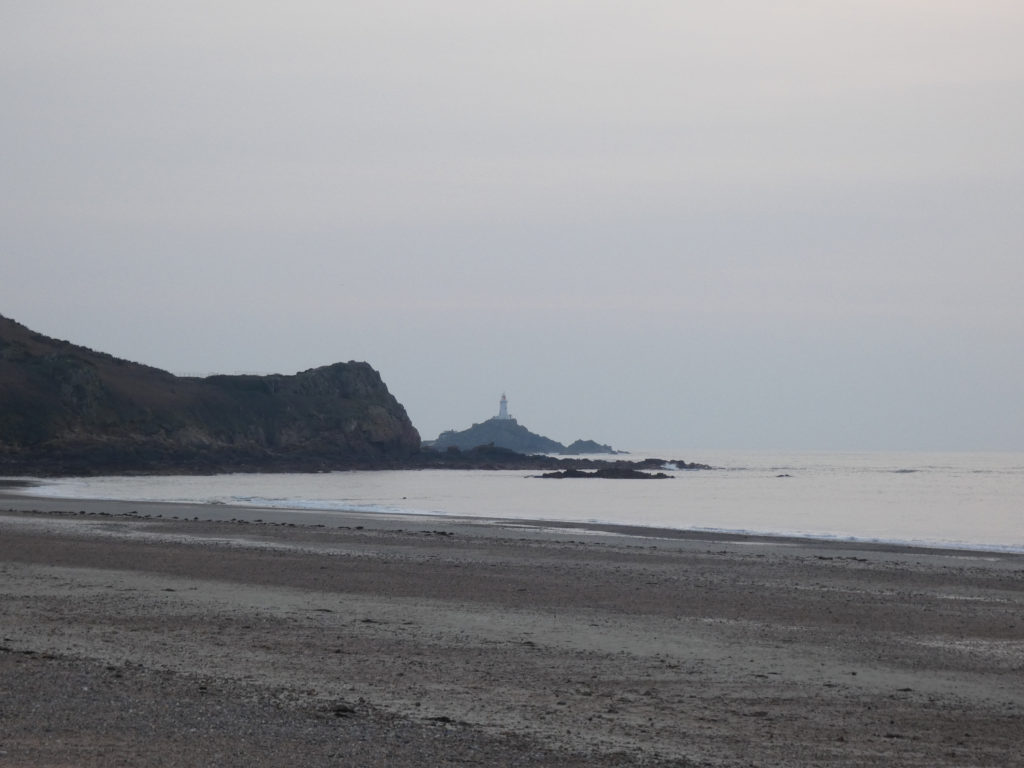
I am going to layer this image I have taken of Corbiere Lighthouse because the images have similar angles and both the images have a lack of colour, which I think will add an overall gloomy mood which would be interesting to contrast.

To juxtapose these images, I layered the archived image over my own photograph to project the contrast of the area over time. I then lowered the opacity of the archived image to create a ghost-like affect, almost representing time fading.
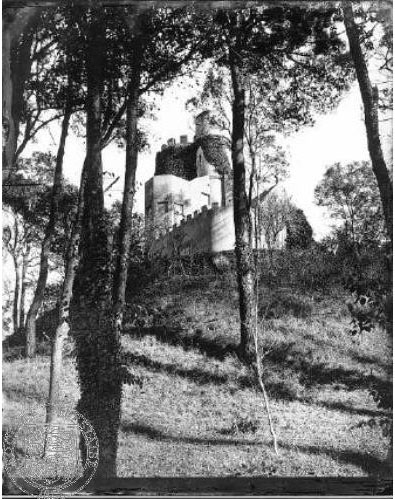
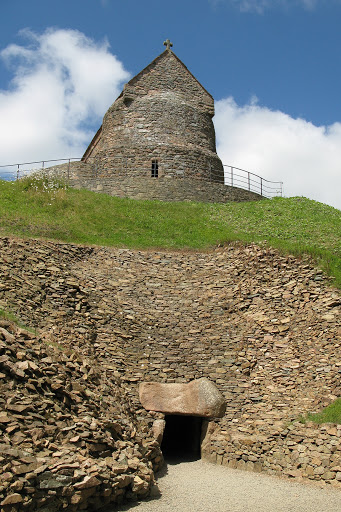
The photograph on the left was taken in 1870 by Ernst Baudoux of the view through trees up to Princes tower with boarded windows and chapel at La Hougue Bie.
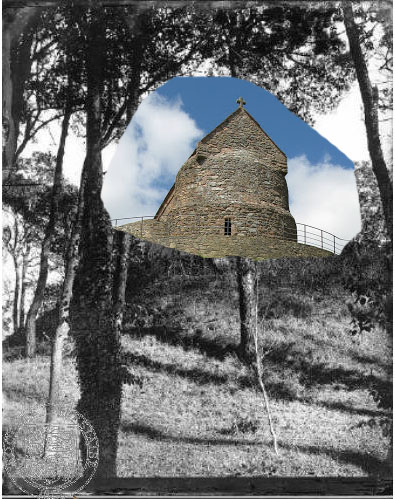

This images was taken by Mrs Dorothy E A Evans in an attempt to capture a beautiful, sunny day. It is a view of Queen’s Valley before flooding to make a reservoir there are trees in the middle distance and fern in the foreground. Evidently, the field is flooded but there are some parts that remain such as the trees and a few plants / fern.
I decided to make my image black and white to add to the theme of Juxtaposition; light vs darkness, past vs present and ancient vs modern.
There is evidence of leading lines in the photograph as the audience will look at the fields and trees and follow the lines to find the horizon. Also, the image is rich in colour which just adds to the idea that the artists wanted to resemble Queen’s valley beauty and majesty.
The lighting appears to be natural as it was a photo taken outside in nature. There are bright colours and harsh dark tones by the trees adding to the theme of juxtaposition and considering that eventually that exact field was flooded to be turned into a reservoir, the dark tones could suggest a “dark” will happen in that place in the future but will not ruin the valley’s natural beauty. In comparison to my photograph revealing the same place taken in 2021, we can see the use of the dark tones to display what was explained above.
In my opinion, this juxtaposition is successful as it powerfully shows the difference between an old image of Queen’s valley and my own image of that same place showing the difference and how places have changed through time.
Contact sheets

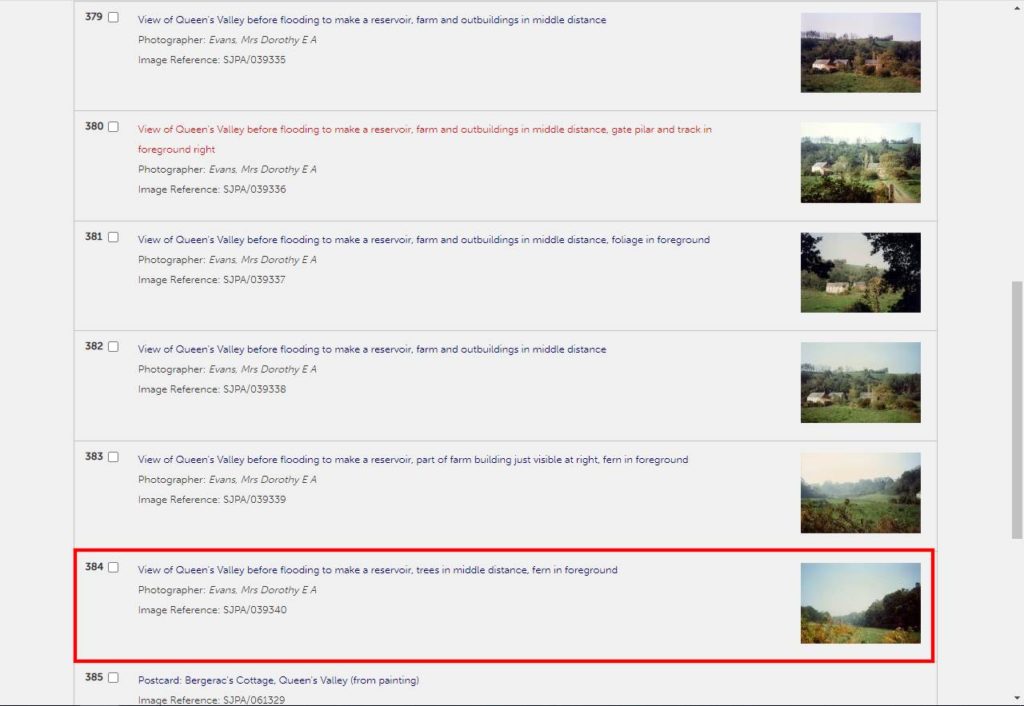
Editing
I have edited this juxtapositions in the following manner:
I have imported both images into Photoshop, then aligned the photo taken by Dorothy to the centre of mine and created a white border around it to act as a frame. I have also blurred the white border several times so that it looks like it is within the image. I did the same with Dorothy’s image so that it looks of a higher quality as it was a bit pixelated.
Ansel Adams (1902-1984) was an American photographer who captured dramatic black and white landscape images as a committed environmentalist. His love of nature, which led to him capturing some of the most influential landscape images in history, was sparked by his native area in California, Adams grew up in a house amid the dunes of the Golden Gate before the famous bridge linking the two headlands was built. The area around San Francisco was still wild then, and he would go on long hikes which helped him escape troubling aspects of his childhood, such as his unhappy schooling and his parents’ financial worries. Adams had so much appreciation for the natural world that he decided he wanted to capture it’s intense atmosphere through photography, it was important to him to show the drama and emotion he felt while exploring these beautiful areas.
The primary technique Adams used to photograph his greatest works was visualisation, the impact this concept had really changed the way photographers captured scenes and decided on their final images. The visualisation process included seeing the photograph’s final product in your mind, deciding the lighting, framing, tones, focus and all other aspects before actually taking the photo. Adams, when describing visualisation, said ‘We must explore what lies before our eyes for its significance, substance, shape, texture, and the relationship of tonal values. We must teach our eyes to become more perceptive.’ By using this technique, Adams has captured some of the greatest landscape images in history, clearly portraying a depth of emotions and connotations behind each photograph. An example where Adams used visualisation as his breakthrough was in 1927, when he wanted to capture the ‘majesty’ of the Half Dome rock formation at Yosemite National Park, but only had one plate left. Visualisation was used when Adams started picturing the image he wanted, ‘a brooding form, with deep shadows and a distant sharp white peak against a dark sky’, however he realised that a yellow filter would not capture the drama of the image as he saw it. Instead, he used a red filter with a long exposure to photograph the image he had imagined in his mind, he said he had achieved ‘my first conscious visualisation’, which allowed him to capture ‘not the way the subject appeared in reality but how it felt to me’. Furthermore, Ansel Adams (along with Fred Archer) formed ‘The Zone System’ where they were able to perfectly control the contrast in their black and white photos, Adams’ base rule was: “Expose for the shadows; develop for the highlights.” The Zone System consists of 0-10 tonal shades (0 being pure black, 10 being pure white) which Adams used to determine the final development of his images. This technique has allowed photographers to have control over the darkest and lightest points of their image, manipulating the meaning and effect portrayed through highlights and shadow.


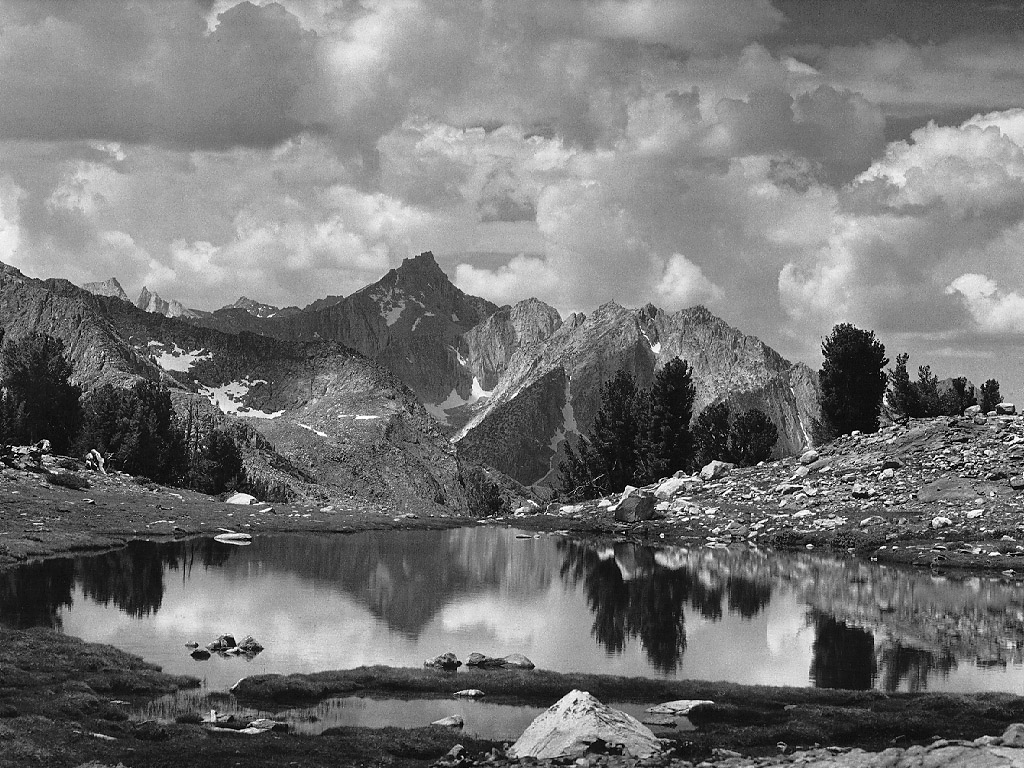

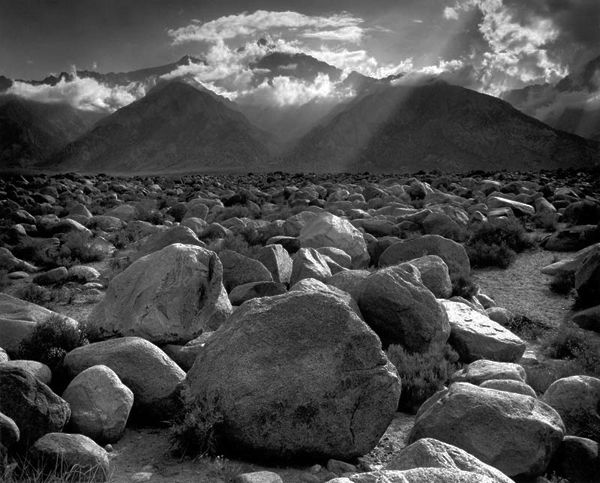
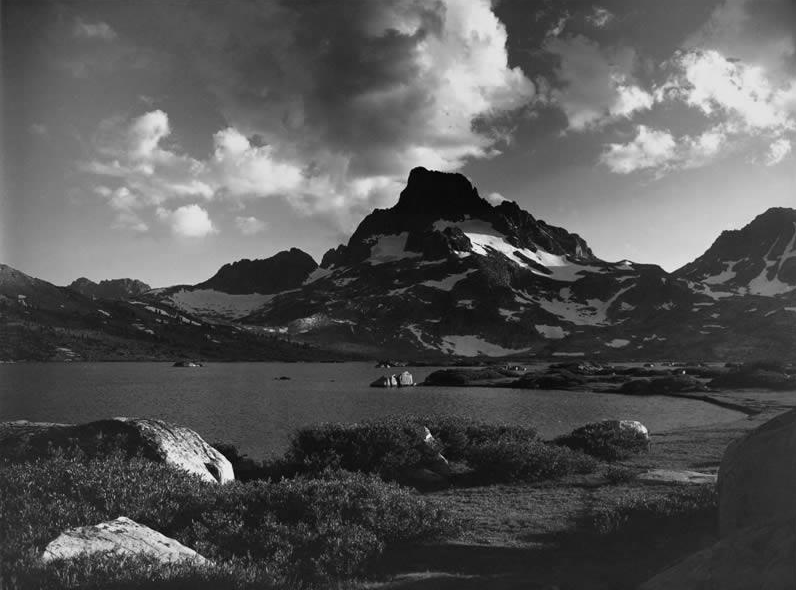
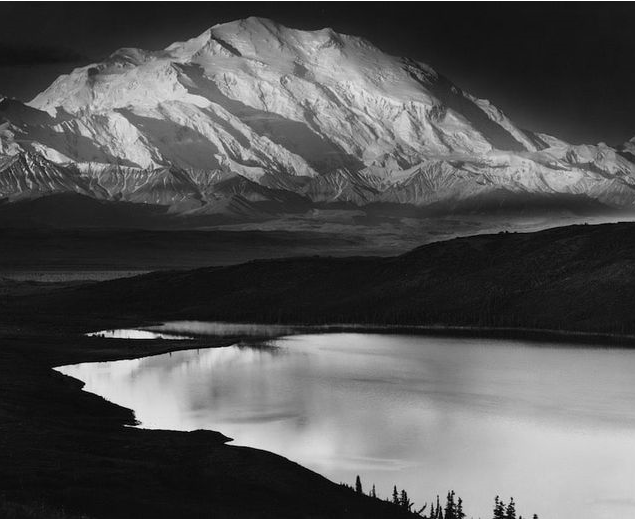

In this photograph Ansel Adams has captured the dramatic atmosphere of Yosemite National Park, with several dynamic features that really show the beauty of nature. The first element that really stands out is his use of the rule of thirds in the composition of this image. In the foreground we can see a dense forest forming 1/3 of the photograph, the middle of the image shows the colossal mountains and the last 3rd of the image depicts the clouded sky. Each section of the photograph holds a different tone, gradually getting lighter as the viewer’s eyeline moves up the photo. Adams has created an easily noticeable sequence through this technique, allowing the observer’s focus to travel through each section, appreciating every small detail of the beautiful nature Adams wanted to capture. Moreover, Adams has used his signature technique of ‘The Zone System’ to further the dramatic contrasts and establish a relationship between the darkest and lightest points of his image. For example, Adam’s has captured zone 0, the deepest tone, around the edges of his photograph which creates a vignette effect as the dark shadows gradient into the middle of the image. Additionally, we can see Adams has captured one of the brighter zones such as 9 or 10 in the centre of the image, highlighting the expanse of mountains going into the distance. This not only shows a wide depth of field, but also the use of this bright white tone connotes themes of biblical imagery, as if a God-like figure waits at the end of the mountains shining a white light to guide the way. It is clear that Adams used a higher f- number to capture this depth as the aperture would need to be larger in order for him to photograph every minuscule detail of the environment around him.
Furthermore, Adams has captured leading lines throughout this image, which act as outlines separating the jagged mountains from the sky. For example, in the mid-left of the photo the observer’s attention is brought to the dark, curved outline of the forest covered mountain which contrasts greatly with the brighter mountain wall behind it. Also, the range of shadows and highlights captured in each mountain’s peak really emphasises the emotion and astonishment Adams felt while taking in this natural environment, it exaggerates his feelings towards the beauty of nature. Another clear feature of this image that shows this dramatic contrast is Adams’ use of directing sunlight to highlight specific areas of his photo. In the mid-right of the image Adams has positioned his camera in a way to capture the bright natural light reflecting off of a waterfall- clearly creating a contrast between the dark shadows of the forest and the glowing water. In addition, there is a wide variety of textures created in this image that further Adams’ theme of the importance and elegance of the natural world. The harsh pointed lines of the mountain peaks form an irregular and spikey texture however the thick scope of trees below provides a more bristly feathered texture, as they all lie closely to each other forming a sort of blanket. This contrast and range in textures creates a powerful atmosphere as they exaggerate the breath-taking feeling, and contrasting emotions, Adams felt while admiring this surrounding.
Candid portraiture
By: Lexandr
About candid
Candid portraiture is a fun, anonymous topic as it gets the photographer to shoot various shots without the model being aware that they have been photographed. This may have ethical issues like consent but this issue can be overcome by asking the models if it’s alright to take a photograph. This may cause photographer bias as subjects may start acting out of their normal behaviour.
On the other hand, taking photographs without the subjects awareness can be called secret photography which is one of the main themes of candid photography.
Others may argue that “a great candid portrait is often made with the subject aware they’re being photographed.”
In conclusion, candid photography appears to be a type of art that allows the photographer to capture real-time events and turn that photograph into a sort of memory because in the due course the artist will look back and remember where and when that shot was taken, and for the subjects, if they ever get to see the photograph, it will open an unaware memory of what they were doing, with who and help them look back and reflect in life.
The fact candid photography might open up a memory that the subject might not even realise they had is very ironic since the theme around candid portraiture centres around the idea that people aren’t aware that they are being photographed.
Richard Billingham
Richard Billingham is an English photographer, film maker and art teacher born on the 25th September 1970 (50).
According to The Guardian, “The photographer made his name with a series showing his dysfunctional parents, Ray and Liz, in their squalid Black Country flat. Now he’s turned their story into an award-winning film.” This clearly shows that his worked has centered mostly on his family, but he’s also focused on other aspects of photography like landscapes and candid. For example:
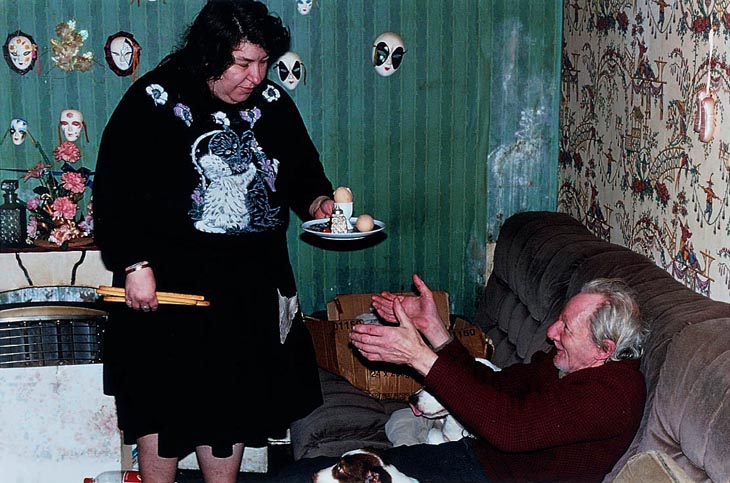
This image is part of his project where he turns something that has affected him into art and gets noticed for it. This project, Ray’s A Laugh (1996) documents his life with an alcoholic father, Ray, and overweight, tattooed, Liz who’s his mum.
He won the 1997 Citibank non-public Bank Photography Prize presently known as the Deutsche Börse Photography Prize and was shortlisted for the 2001 Turner Prize. His work is control inside the perpetual assortments of Allen Tate, the Victoria and Albert gallery, and Government Art Collection in London.
Noticeably, we can see that Richard was a very famous photographer from the 20th century.

Image analysis
Substance:
This image was taken while Billingham was still working on his Ray’s A Laugh during the 1996.
Obviously it was taken to document his life and environment around his parents . Knowing this, some appreciators may argue that this project may bring comfort to some people who identify with this project.
Composition:
This image’s focal point appears to be the parents / models. This could indicate that the author wants the audience to focus their attention to the parents before anything else.
The rule of thirds has been powerfully use to arrange the models to the center and the props like masks to the left hand side of the image. It may be argued the Golden Rule was also used seeing as the audience focus their attention firstly on the subjects then the props around them.
The subjects appear to be Liz and Ray themselves. The artist has purposely used them for Ray’s A Laugh project since it is about them.
The artist has used dark colours to compose this image. For example, he has used the green wall in this image which is a sign for life, greed and jealousy. The wall is obviously behind Liz which could indicate that she gets jealous of Ray or suspects he could be cheating on her with other women.
Mise En Scène:
Liz is holding bread sticks on her right hand and a plate with an egg with her other hand. This may show to the reader how fragile and emotional Liz (Richard’s mum) can get at times. The fact she’s holding food in her hand enforces the idea that she’s overweight as Richard stated in The Guardian.
Ray on the other hand has a red face strengthening the idea of an alcoholic father. Ray is sitting on a dark, brown sofa signifying his dark past and his unwillingness to do anything as Ray has his hands towards the food Liz seems to have made for him.
There are also mini masks across the green wall signifying the various facades Liz and Richard may use for the public.
There’s a plant in the background growing from a mistreated environment suggesting that Richard blossomed in an environment like this; giving hope for the audience.
Techniques and editing:
It appears that a fast shutter speed of 100/120 was used as details are fixed and sharp in detail.
The depth of field for this picture has all the earmarks of being very huge as a large portion of the picture is fixed. This was utilized to catch as much of the setting as could be expected while holding a fresh detail to the picture. This being said, we can also guess that a tripod was used to keep the camera used.
The shot appears to be in digital format as it’s a recent photograph. Also there are no debris which could suggest that it’s not a Lomography.
Atmosphere:
This image makes me feel somewhat calm and relaxed as it’s a semi-familiar environment; it gives me nostalgia to my grandparents and great-nan’s houses as they looked similar to this. The use of models and props also influence this effect.
Lighting:
The light in this shot appears to be coming from the back to the front successfully illuminating the subjects and props.
It appears a flash may have been used as there are bits of reflection around the image.
There are bright and dark tones throughout this photograph, specifically Liz’s dress suggesting that she could be going through a hard time in her life.
Response:
For this project I will attempt to create a sense of nostalgia to the viewer and create something the viewer may relate to.
Since the theme is candid I will have to plan out how to take secretive photographs without the participants being aware of it.
Richard attempted to story-tell a bit about his life through this photograph so I will see how I can achieve a similar outcome.
In my opinion, the photograph is very interesting due to its naturalistic, candid approach leaving the audience wondering what is happening and why was this image taken in the first place.
Planning
Location: Seeing as this a candid project I will shoot in various location such as home, work place (school) and public. I will do this to get a wide variety of images showing different types of people.
Content: I will capture images of my subjects in their natural environment capturing whatever it is they will be doing in real time, making sure they have no time to change their behaviour as this
Lighting:
I will be mostly using ambient lighting in order to make my photos as natural as possible.
My photos may include natural lighting since some of my photographs will be taken outside. Some may have artificial light due to them being taken inside.
Camera / settings:
I will be using 2 different cameras for this project:
Contact sheets
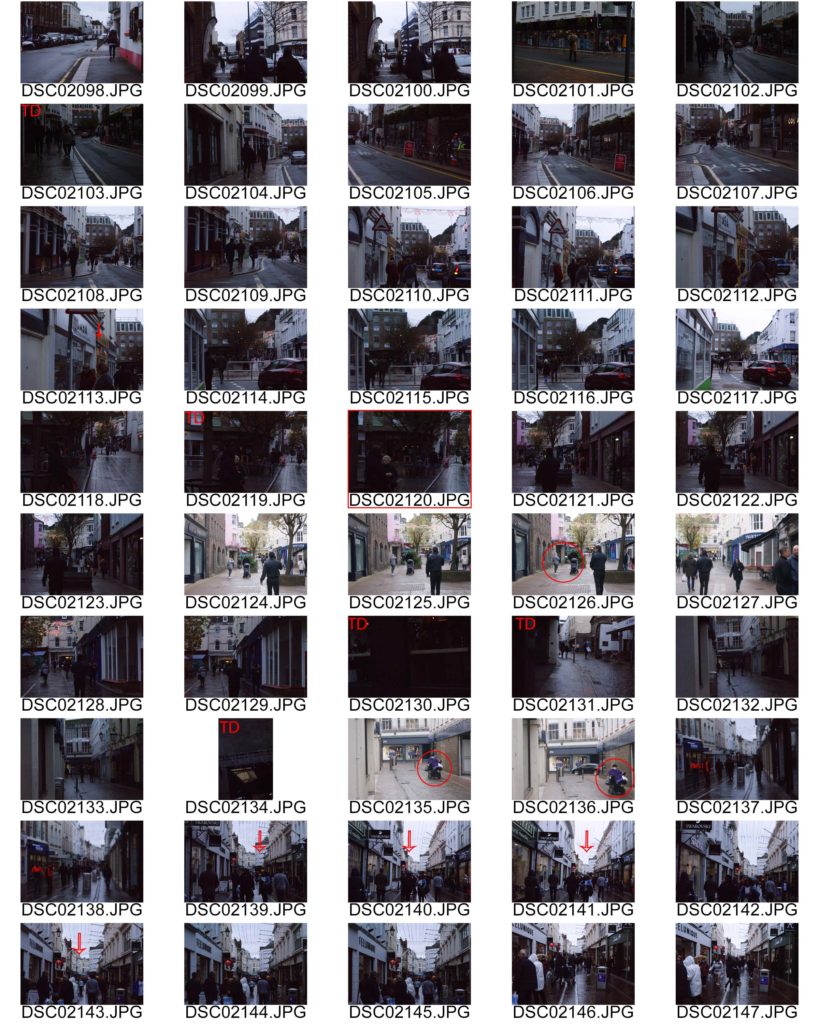
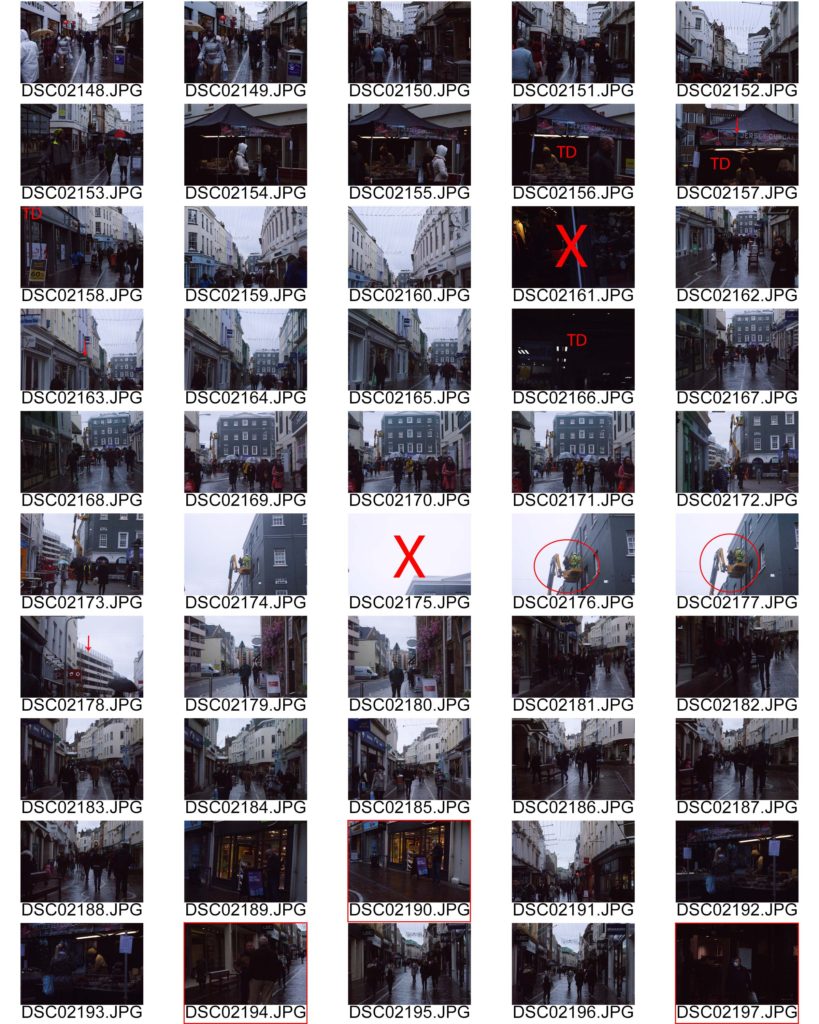
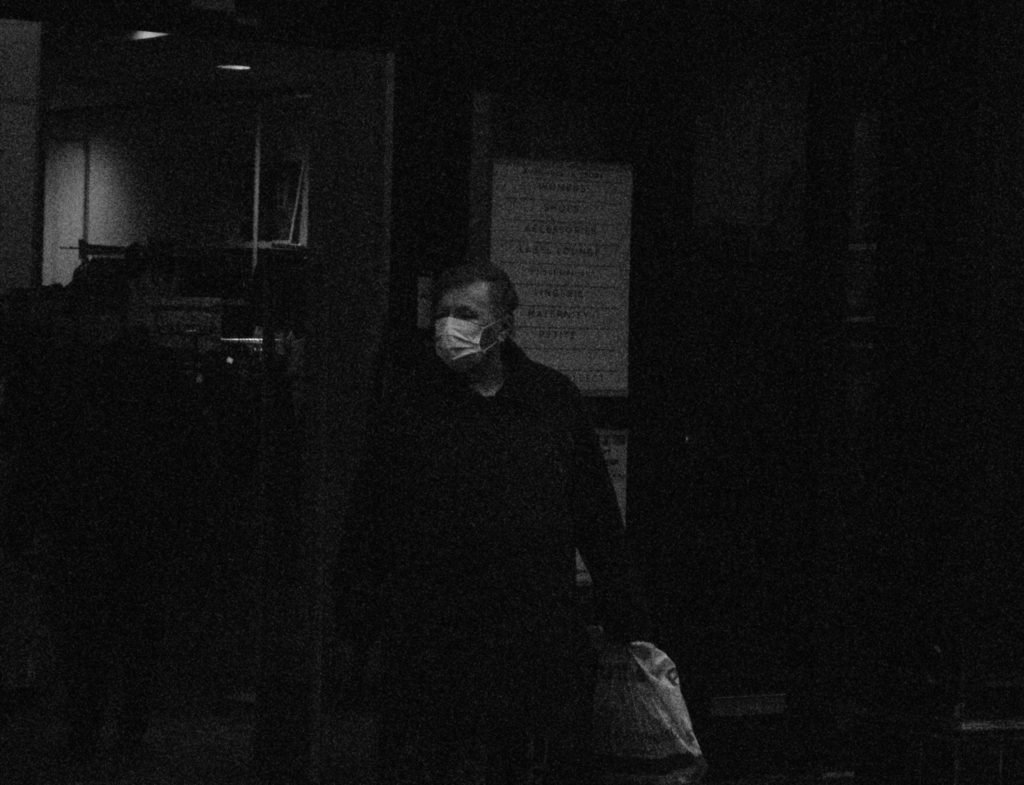
Outcome 1
These series of images were intentionally grainy to relate to film photography and the context Ralph was in; film was mainly used.
This image contain an individual with a mask on (due to Covid-19 pandemic). It is in black and white to relate to the 70s and also it makes it easier to edit. Also, due to my experimentation with ISO most images contain grain hence the inspiration to give a Lomography feeling.
The man is at the centre of the image therefore making him the focal point of this image. The individual appears to be looking to the side as if he’s thinking or looking for the next shop to go to as he’s holding a plastic bag suggesting the idea he went shopping.
The rule of thirds and centered composition have been used in this image to powerfully place the model to help make them the main focal point.
In relation to Richard, I took the inspiration of his birth year (1970) and made my photograph black and white as coloured film was expensive to produce. It is also a photograph taken without the model knowing making it candid.

Outcome 2
In this outcome, an adult lady is talking to what appears her friend. The lighting for this image is natural as it was taken outside with a harsh use of ISO.
The image is in black and white to relate to Richard and some of his black and white work.
I have used photoshop to reduce the colour noise and grain from this image but it has decreased the quality of the image along with it. However, the grain kind of works well with the idea of lomography.
There is a constant use of the rule of thirds in this photograph as the face of the model is centered close to the middle making her the main focus of the image and having the background behind her.
This photo and candid photography just come to show how un-attentive we humans can be not noticing someone is taking a photo of us.
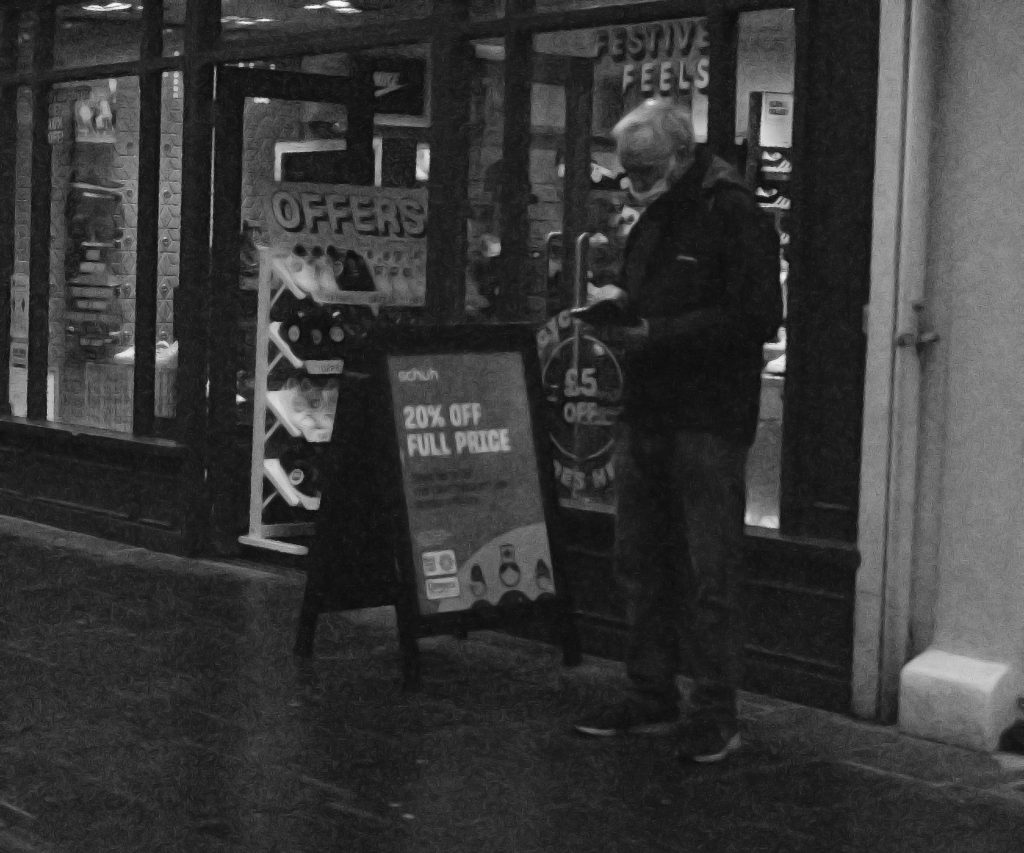
Outcome 3
In this outcome the lighting is natural and quite dim due to the wheather (cloudy) and the low ISO used to try and freeze individuals in a way on a frame without them noticing and/or have the image with blurry movement.
The rule of space has been used to compose this image showing that the model has enough space to move to but is more entrigued by his phone.
This image can show how content we are with simple, minimalistic entertainment than what’s actually around us. For example, behind the man there is a show sale happening with a sign saying “20% off” but the model is too busy on his phone to appreciate the environment around him.

Outcome 4
In this outcome we can clearly see another example of an individual talking to their friend.
I have purposely used the centered composition to compose this image as the man is clearly centered.
It’s in black and white to relate to the other black and white images with naturalistic edited lighting.
In my opinion I have successfully achieved the purpose of this project which was to take portraits of people anywhere without their realisation so that we can capture their naturalistic form without photographer bias intervening.
This is powerfully shown by my 4 final outcomes where I have captured models talking to their friends, busy on their phones and not acknowledging a sale on a shop and much more. This energetically demonstrates and is an example of candid / covert photography.
I love how the images turned out as it gives this vintage look which was very common in 1970s (Richard’s birth year). On the other hand however, the photographs had noise grain and colour which was due to the low ISO being used along with a fast shutter speed. It may be argued that it adds to the vintage theme but with the amount of editing used to restore the images, the shots lost their sparkle by a lot.
Therefore, I will learn to use ISO and Shutter speed on manual mode in an efficient and clear way in order for the photographs to be as high quality as possible.
Fay Godwin, born in 1931, Berlin, is best known for her rural landscape photography. Growing up in many different countries, with a diplomat father and artist mother, and travelling most of her younger life, Godwin was conditioned to have a love for the arts from a young age. At the age of 21, Godwin had found a place to settle in London, where she worked at a publishers. This photographer’s fascination with photography first emerged in the 1960s, when she would often take pictures of her children, later looking at it as a more serious career choice. From this she started out as a freelance photographer, then moving on to selling her own books containing these countryside landscapes. It was Godwin’s book titled “Land” however, that gave her the most recognition, containing all her work from the past decade of her photography.
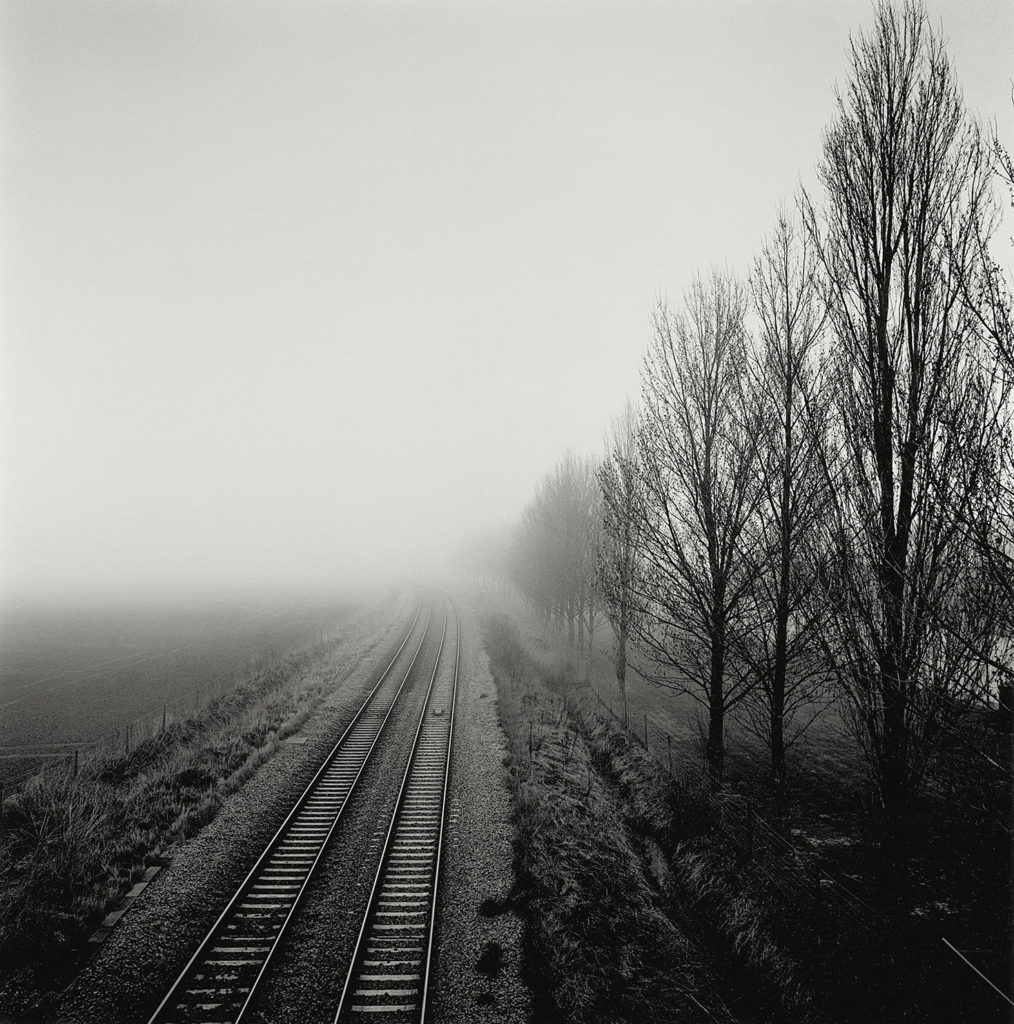
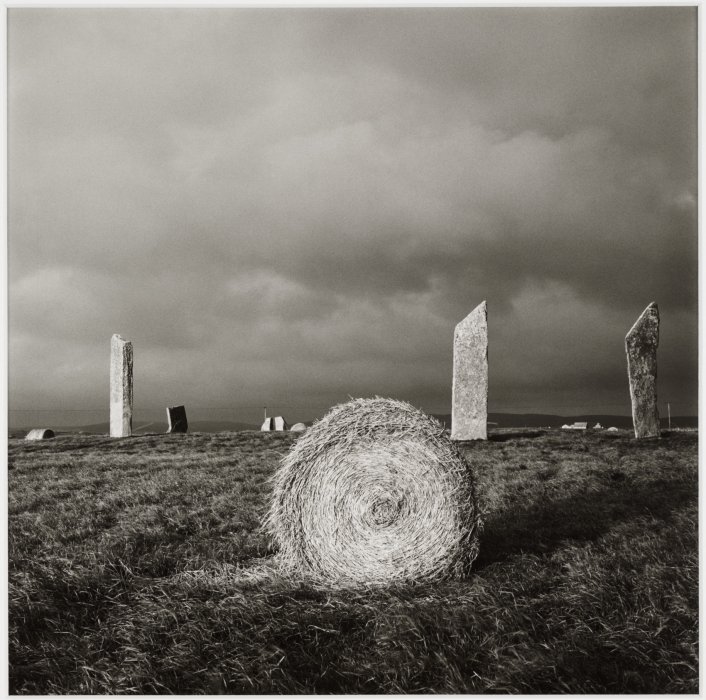
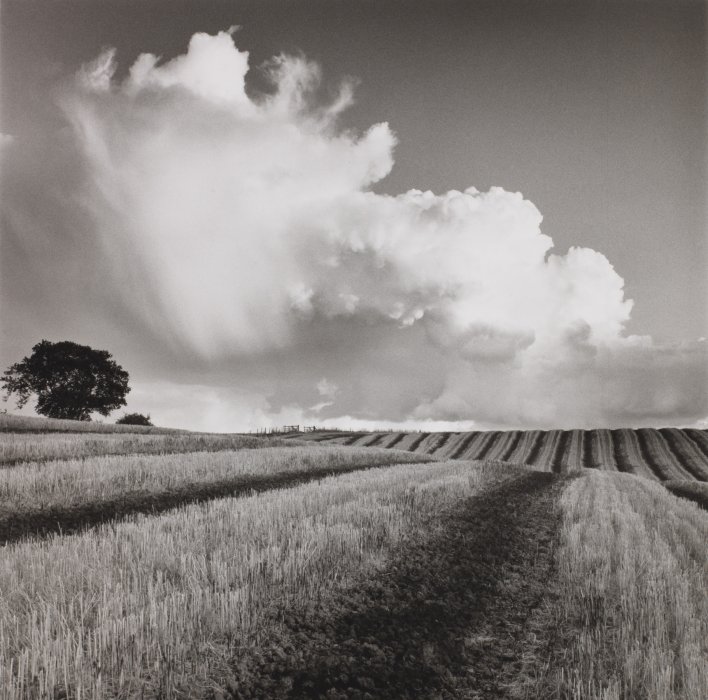
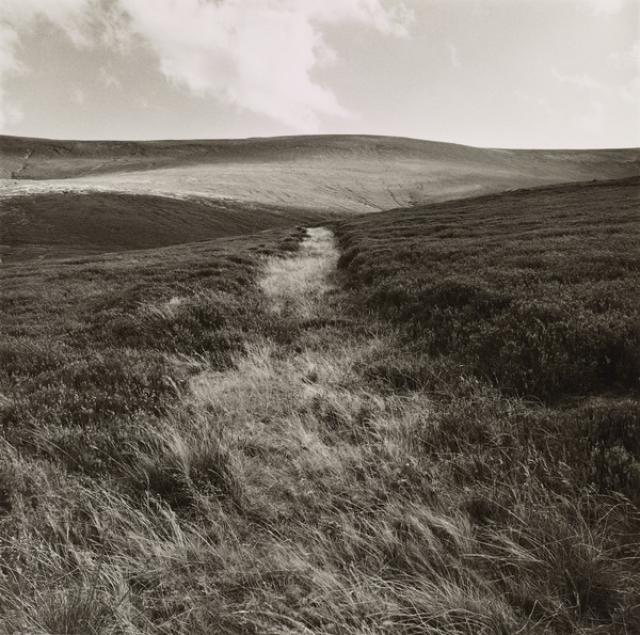
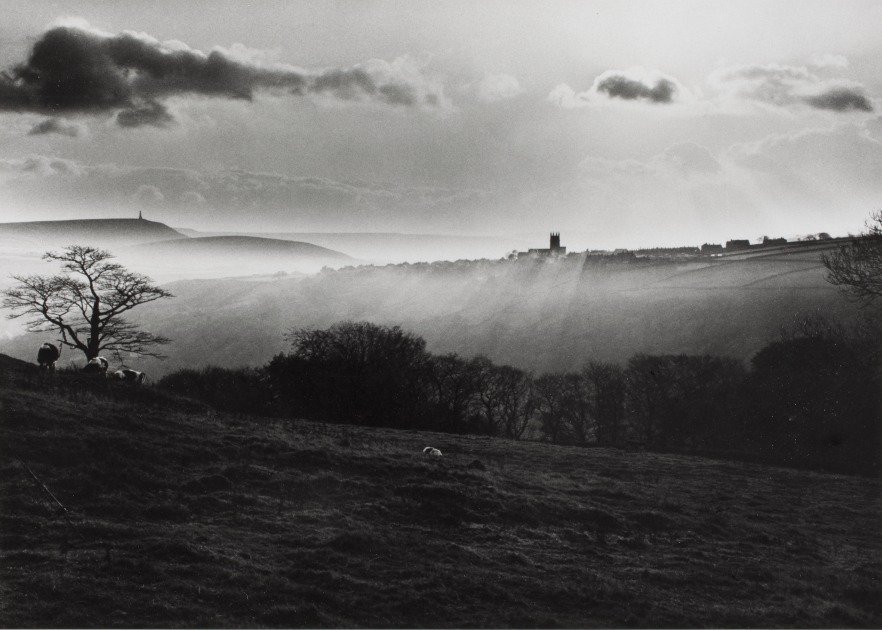

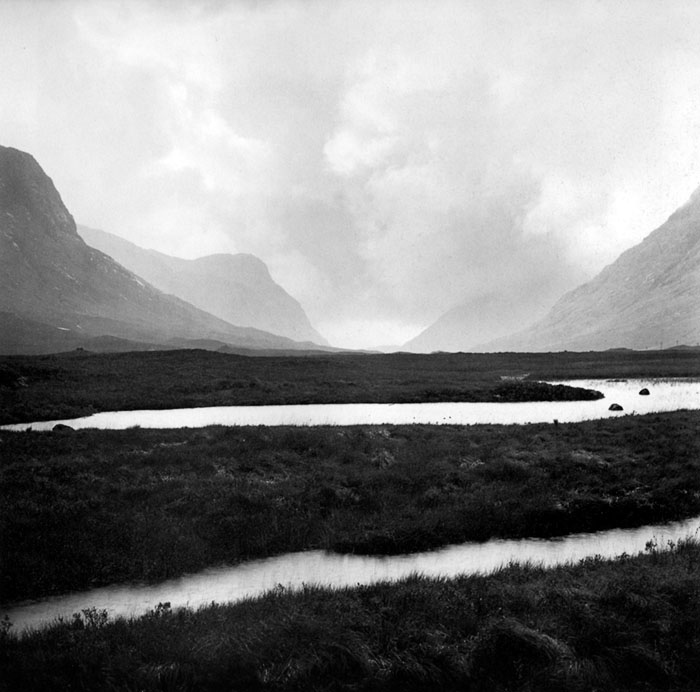

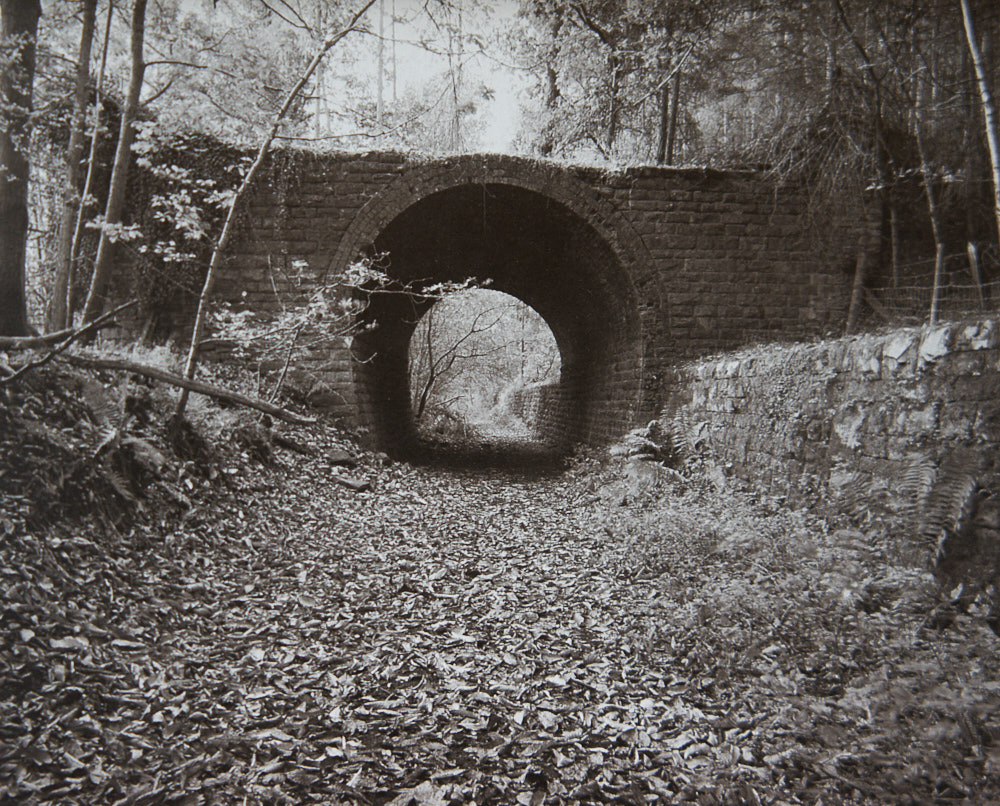
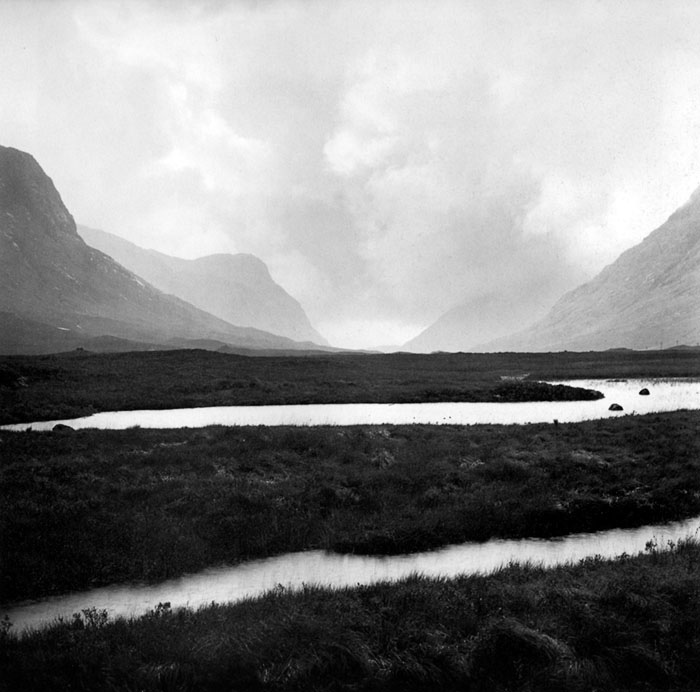
This atmospheric black and white photograph taken by Faye Godwin, displays a rural setting containing a valley, running through a mountain range. Leading lines in this image are created by the curved river, flowing in the foreground, drawing the viewers eyes towards the mountain range, in the background, slightly covered by mist. The jagged outlines of these mountains also aid the structure of this image, by gradually leading the viewers eye down into the valley. Here Godwin has clearly exhibited strong contrast between light and dark, with the luminous river highlighted by the sun, and the dark grassy lands that encompass it. These dark tones also contrast with the upper half of the image, past the horizon line, which contains light to mid-tones. There is a small amount of symmetry in this image, which is created with the center placement of the opening of the valley, seen in the background. It can also be said that the viewpoint in which this image was taken, was from head height due to the horizon line being in the center third of the photograph.
It is clear that the light used in order to take this photograph, was natural, created by a gentle, translucent haze over the mountains, as it is a rural landscape image, with no artificial light in the surroundings, as you might see in an urban landscape. It appears that Godwin took this image at midday, due to the evenly dispersed and soft light that does not create many harsh shadows in the landscape. For this Photograph Godwin most likely used a low aperture, allowing for a large depth of field, this is as the foreground and background in this landscape photograph have the same amount of focus on them. In addition, the shutter speed that Godwin used must have been on a fast setting due to the sharpness of the image. The ISO setting used to take this picture most likely was on a low setting, due to the large amount of light flooding the image, and highlighting the river.
As an avid walker, and a member of the Ramblers association, Godwin had great respect and admiration of nature and the preservation of it, even going as far as protesting for the cause. This later lead to her claiming that she was in fact a documentary photographer rather than a landscape photographer, stating that she acted as a reporter of the land. This appreciation can be seen in this image, as it can be said it the captures unbounded essence of the sublime and romantic genre, creating a photograph from a perspective, that allows you to be in awe of the grand scale of nature and its immense beauty.